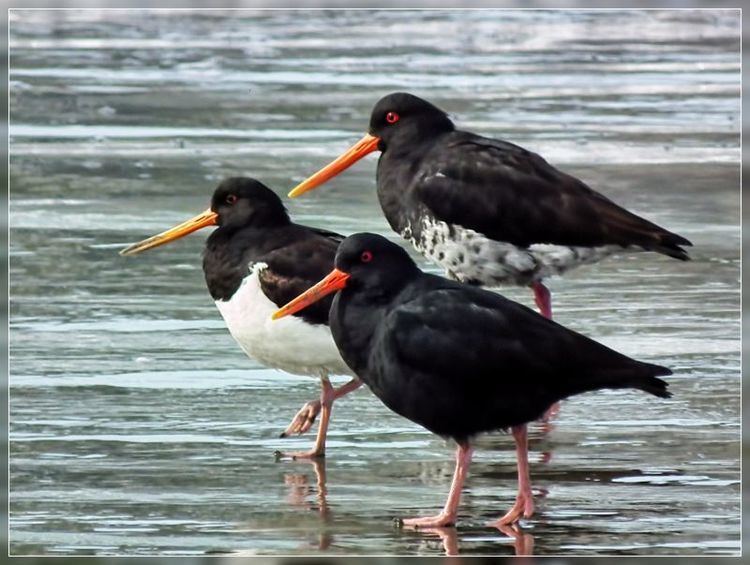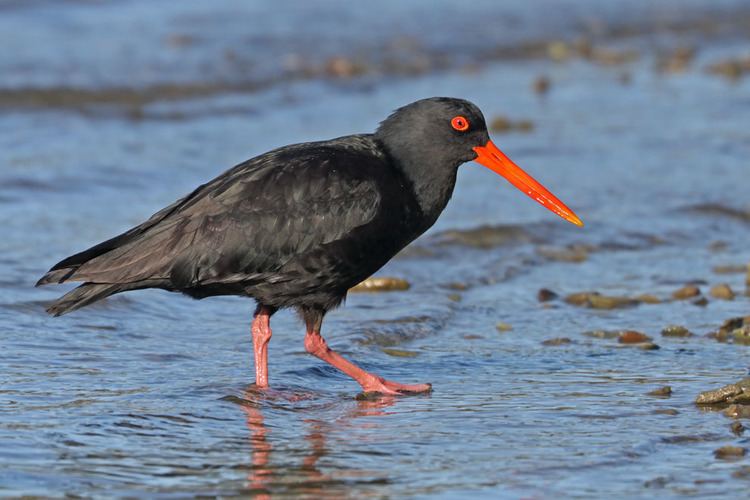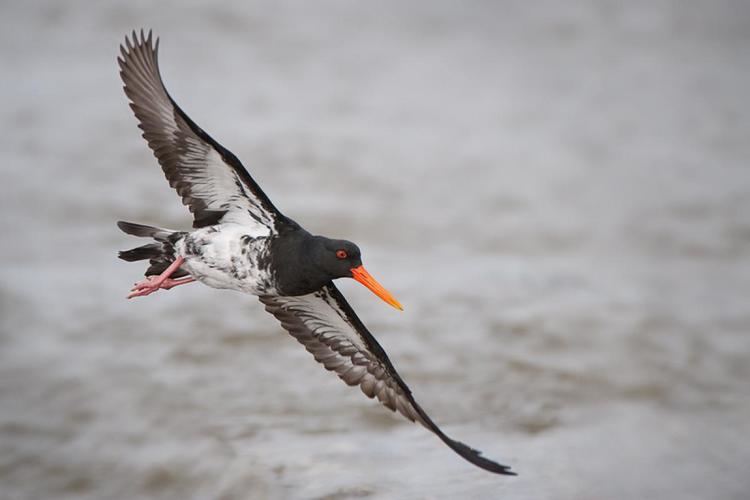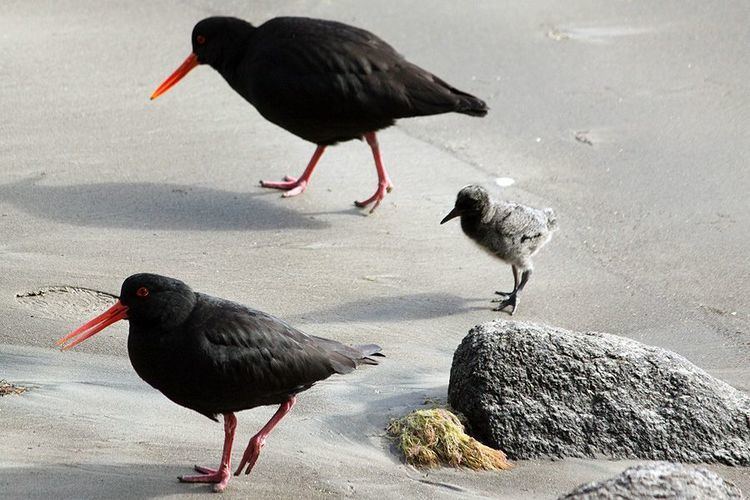Genus Haematopus Higher classification Oystercatcher | Phylum Chordata Family Haematopodidae Scientific name Haematopus unicolor Rank Species | |
 | ||
Similar Oystercatcher, Bird, South Island oystercatcher, Pied oystercatcher, New Zealand plover | ||
New zealand birds variable oystercatcher family from 22 nov 2014 to 7 feb 2015
The variable oystercatcher (Haematopus unicolor) is a species of wader in the family Haematopodidae. It is endemic to New Zealand. The Maori name is torea-pango. They are also known as 'red bills'.
Contents
- New zealand birds variable oystercatcher family from 22 nov 2014 to 7 feb 2015
- Variable oystercatcher
- References

"Variable" refers to the frontal plumage, which ranges from pied through mottled to all black. They are polymorphic meaning they have different genetic variants. Blacker birds are more common in the south. All Stewart Island variable oystercatchers are black. They have pink legs, an orange eye ring and red beaks. They are often seen in pairs on the coast all around New Zealand. During breeding, the pair will defend their territory, sometimes aggressively. Once mated pairs rarely divorce. After breeding they may be seen within flocks, or on the edges of flocks, of black and white South Island pied oystercatcher (SIPO) which also have vivid orange beaks. After breeding they may even form small flocks of their own. Males are around 678 grams and females slightly larger at around 724 grams. Variables can be identified as they are slightly larger than the SIPO - SIPO are around 550 grams. Occasionally totally black but if they are pied (black and white) they can be easily confused with SIPO. The variable species has less definition between the black and the white area, as well as a mottled band on the leading edges of the underwing. Variables also have a smaller white rump patch which is only a band across the base of the tail rather than a wide wedge shape reaching up to the middle of the back as in the SIPO. When mottled they are sometimes called 'smudgies'. They feed on molluscs, crabs and marine worms. After heavy rain, they sometime go inland in search of earthworms. They can open a shellfish by either hammering a hole in it or getting the bill between the two shells (of a bivalve) and twisting them apart. They breed in North Island, South Island, Stewart Island, and Chatham Islands. They do not breed inland or beside rivers although the SIPO does.

They nest on the shore between rocks or on sand dunes by making a scrape out of the sand or shingle, sometimes lined with some seaweed. When in flight they make a high pitched 'kleep kleep' sound. They usually lay 2-3 eggs but they can lay up to 5. The eggs are typically stone coloured with small brown patches all over. Eggs hatch in 25–32 days. Chicks are well camouflaged by their colour and can fly in about 6 weeks. The bird lives up to about 27 years.

Variable oystercatcher



